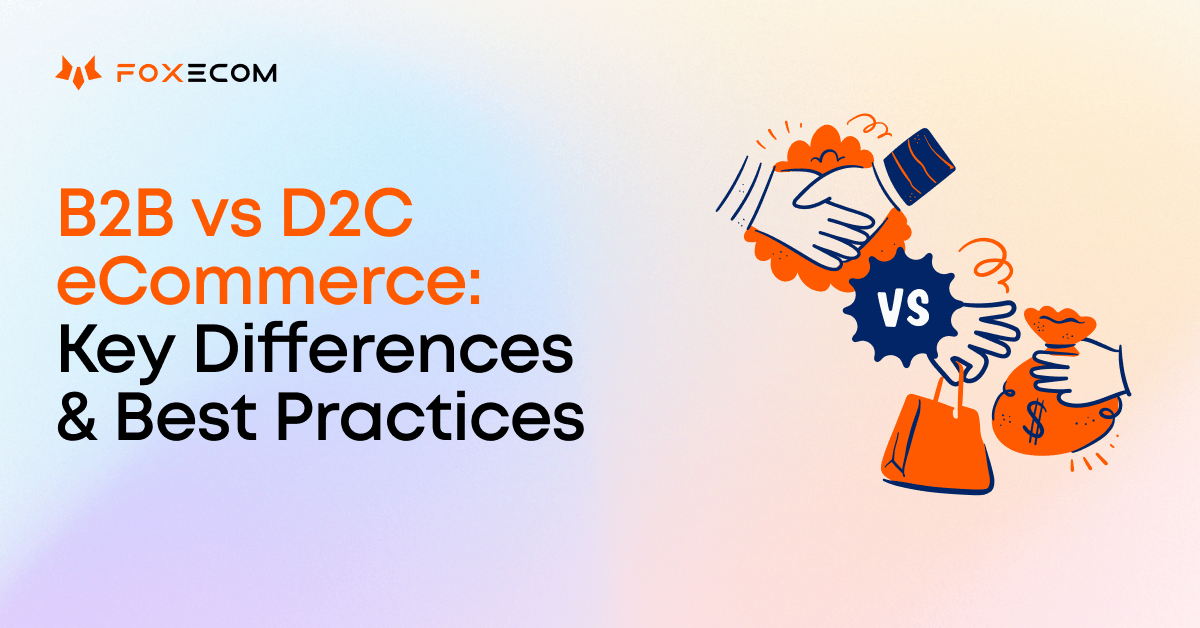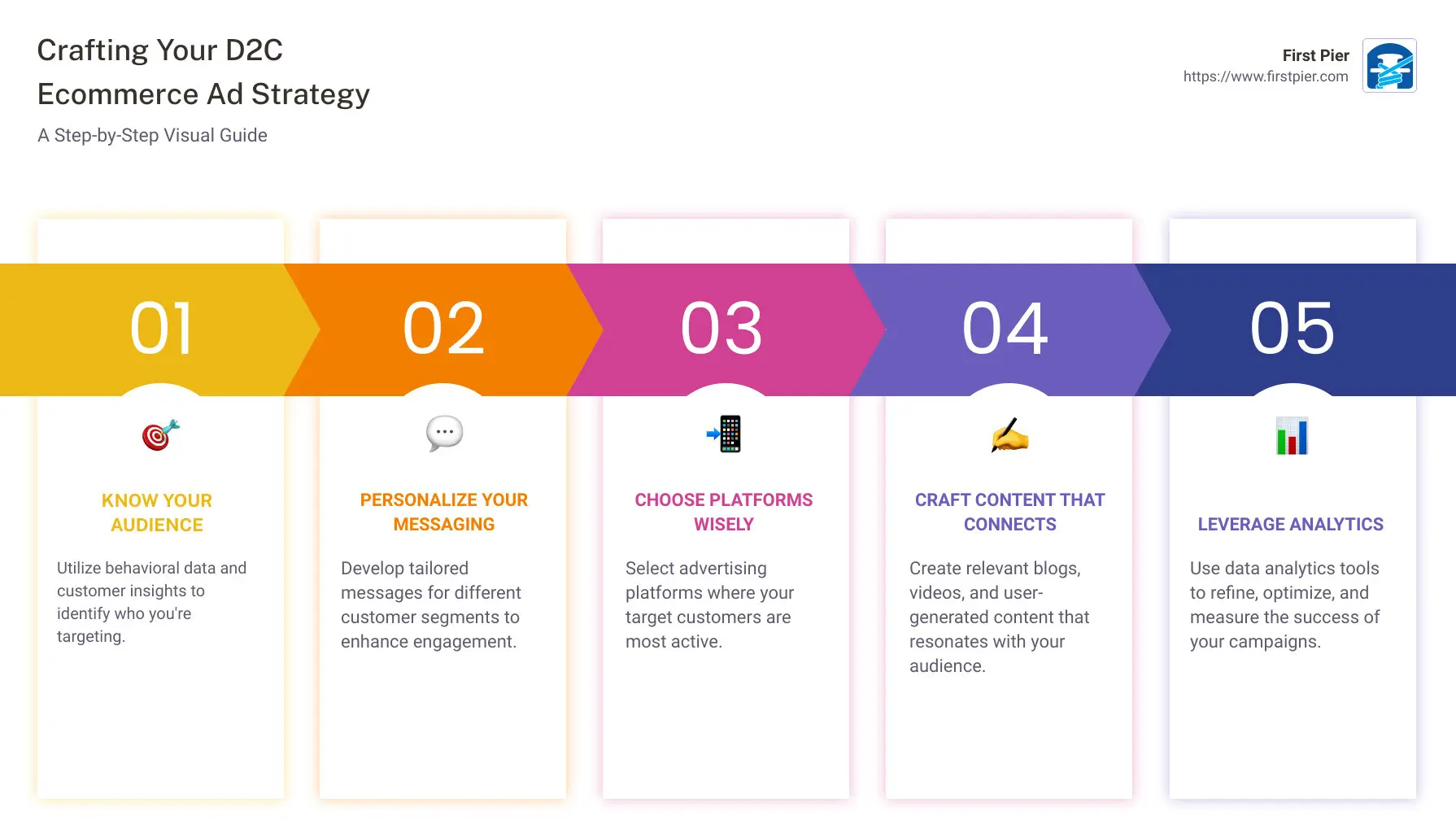Checking out the Possible of D2C Ecommerce: A Comprehensive Overview for Businesses
The D2C ecommerce design offers a considerable change in how brand names engage with customers. It makes it possible for firms to bypass standard retail networks, cultivating deeper links and potentially boosted revenue margins. Nonetheless, this strategy is not without its complexities. Understanding the nuances of D2C ecommerce is important for brand names aiming to thrive. What techniques can they take on to browse this advancing landscape effectively? The responses might redefine their company strategies.
Understanding the D2C Ecommerce Version

Key Conveniences of D2C Ecommerce for Brands
The D2C ecommerce model supplies brands significant advantages, particularly pertaining to boosted revenue margins. By eliminating intermediaries, firms can retain a larger share of sales revenue. Furthermore, this straight relationship with clients promotes boosted brand name commitment, motivating repeat acquisitions and long-term engagement.
Boosted Earnings Margins

Enhanced Brand Commitment
Building on the monetary advantages of D2C ecommerce, improved brand loyalty emerges as one more important benefit for firms engaging directly with customers. By developing a direct connection, brand names can promote much deeper relationships with their consumers, getting understandings into actions and choices. This direct communication permits more individualized advertising approaches, which reverberate strongly with customers. Furthermore, brands have the opportunity to control their messaging and customer experience, strengthening brand name values and building depend on. When clients really feel a personal connection, they are more probable to return, advocate for the brand name, and join neighborhood engagement. Inevitably, improved brand name loyalty not just drives repeat acquisitions however additionally grows an enthusiastic client base, further strengthening a brand name's setting out there.
Difficulties Encountered by D2C Brands
D2C brand names run into numerous considerable difficulties that can influence their success. Inventory administration issues can cause stock shortages or excess, complicating procedures and customer complete satisfaction. In addition, advertising and marketing spending plan restrictions frequently restrict the ability to effectively get to and involve target market.
Inventory Management Issues
Reliable stock management provides a powerful challenge for numerous brand names operating in the direct-to-consumer (D2C) room. These brand names typically face changing need, which can result in overstock or stockouts, ultimately impacting customer satisfaction and earnings. In addition, the lack of innovative stock radar can cause discrepancies between real supply degrees and reported information, complicating order fulfillment. The varied range of products D2C brands generally offer also complicates supply administration, as variants in dimensions, designs, and colors require more meticulous oversight. Moreover, many D2C businesses may battle with minimal warehousing capacities, bring about inefficient usage of room and resources. Subsequently, effective inventory administration continues to be an essential difficulty for D2C brand names intending for sustainable development and functional efficiency.
Advertising Budget Constraints
Navigating marketing budget restrictions is a significant obstacle for lots of direct-to-consumer (D2C) brand names. Limited economic sources often limit these business' capability to buy all-inclusive marketing techniques, leading to decreased presence in a competitive market. D2C brand names often come to grips with the requirement to optimize return on financial investment (ROI) while targeting details target markets properly. This obstacle is intensified by increasing expenses in digital advertising and marketing and the need to designate funds across numerous channels, consisting of social media sites, online search engine, and email marketing. Lots of D2C brand names need to innovate affordable advertising services, leveraging organic growth approaches and influencer collaborations. Ultimately, successfully maneuvering these budget constraints is important for sustaining growth and accomplishing long-lasting profitability in the evolving ecommerce landscape.
Methods for Constructing an Effective D2C Ecommerce Organization
As consumers significantly seek direct connections with brand names, establishing a successful D2C ecommerce organization requires a critical approach that focuses on client interaction and trust. One efficient approach is to create engaging brand name narratives that resonate with target audiences, fostering emotional connections. Making use of social media platforms can enhance exposure and promote two-way communication, permitting brands to engage directly with customers.Moreover, customized experiences with customized marketing efforts can greatly improve customer retention and loyalty. Implementing commitment programs and offering exclusive deals can even more incentivize repeat purchases.Streamlining the purchasing process is important, guaranteeing an user-friendly interface that enhances the buying experience. In addition, transparent communication regarding delivery and returns develops trust fund and urges consumer confidence.Finally, actively looking for customer feedback and reacting to it demonstrates a commitment to enhancement and customer fulfillment, vital aspects in the competitive D2C landscape.
Leveraging Modern Technology for Improved Customer Experience
In today's competitive D2C ecommerce landscape, technology plays a pivotal duty fit customer experiences. Businesses increasingly make use of sophisticated devices such as expert system, chatbots, and customized formulas to improve communications and enhance the shopping procedure. By integrating these modern technologies, brands can supply tailored product referrals based on private choices and buying behaviors, promoting a more appealing experience.Moreover, receptive web site layouts and mobile applications ensure that customers can access solutions effortlessly across different gadgets. Improved payment options, consisting of digital wallets and one-click check outs, even more streamline purchases, making it simpler for consumers to make purchases.Data analytics also makes it possible for businesses to collect insights into client habits, enabling for continuous improvement of services and offerings. Generally, leveraging modern technology not only boosts customer fulfillment yet likewise cultivates loyalty, eventually driving long-term success in the D2C ecommerce industry.
Advertising And Marketing Strategies to Drive D2C Sales
Just how can brands efficiently catch the interest of customers in a saturated market? To flourish in the direct-to-consumer article (D2C) landscape, brands must employ targeted marketing tactics. Using social media systems, brands can involve consumers with interactive content, influencer partnerships, and user-generated messages. Customized email campaigns can also cultivate a feeling of connection, using customized promotions based upon customer behavior and preferences.Moreover, narration plays a vital role in differentiating a brand's story, making it relatable and unforgettable. Brand names top article must invest in search engine optimization (SEO) to improve exposure, ensuring their products are quickly visible online. In addition, leveraging information analytics allows organizations to fine-tune their advertising and marketing approaches and recognize consumer trends much better. Ultimately, a multi-channel approach that combines imagination with data-driven insights can greatly enhance D2C sales, permitting brands to attract attention in a jampacked market.
Future Patterns in D2C Ecommerce
With the rapid advancement of modern technology and consumer preferences, the future of D2C ecommerce is positioned for significant makeover. Arising patterns indicate a shift in the direction of hyper-personalization, where brand names take advantage of information analytics to tailor offerings to specific consumer needs. This modification enhances consumer experiences, promoting commitment and engagement.Moreover, sustainability is ending up being an important variable, with consumers significantly favoring brands that prioritize green techniques - D2C Ecommerce Agency. Firms are expected to adopt transparent supply chains and lasting products to satisfy this demand.The combination of synthetic knowledge and increased truth will in addition revolutionize the buying experience, enabling consumers to visualize products in their atmospheres before purchase. Additionally, social business is expected to grow, as platforms like Instagram and TikTok facilitate seamless buying experiences straight within social media.These fads collectively represent a vibrant future for D2C ecommerce, stressing customer-centric techniques and cutting-edge technologies that redefine consumer interactions
Often Asked Inquiries
What Industries Benefit The Majority Of From D2C Ecommerce?
The present question highlights industries that thrive through direct-to-consumer (D2C) ecommerce. Remarkably, style, charm, electronic devices, and food markets take advantage of D2C designs to boost brand name loyalty, boost client partnerships, and enhance earnings margins efficiently.
Exactly How Do Shipping Costs Influence D2C Pricing Strategies?
Delivering expenses significantly affect D2C rates strategies. Businesses have to stabilize these expenditures with competitive prices, taking into consideration client assumptions and revenue margins. Efficient monitoring of shipping can improve consumer satisfaction and drive sales in direct-to-consumer designs.
What Repayment Options Should D2C Services Deal?
D2C companies should supply varied payment alternatives, including credit/debit cards, electronic wallets, and acquire now, pay later on solutions. This range boosts client ease, enhances conversion prices, and provides to various customer preferences in the on the internet shopping landscape.
How Can D2C Brands Handle Client Returns Properly?
D2C brands article can manage customer returns efficiently by carrying out user-friendly return plans, using pre paid shipping tags, and ensuring timely refunds (D2C Ecommerce Agency). Clear communication and structured processes enhance client complete satisfaction and urge repeat business
What Legal Factors To Consider Exist for D2C Ecommerce Operations?
Lawful factors to consider for D2C ecommerce procedures include conformity with customer defense laws, information personal privacy guidelines, copyright legal rights, and taxation requirements. Brand names should navigate these intricacies to prevent legal risks and assure smooth operations. By getting rid of intermediaries, D2C brands can provide competitive pricing and promote a much more intimate connection with their customers.The D2C design is defined by its dependence on digital platforms, allowing brands to use social media, online marketplaces, and their own internet sites to engage with consumers straight. D2C ecommerce promotes the collection of useful customer data, enabling brand names to customize their offerings and advertising approaches successfully, ultimately driving sales and increasing margins. Additionally, brands have the opportunity to control their messaging and client experience, strengthening brand name values and building trust. As consumers progressively seek straight connections with brands, establishing an effective D2C ecommerce company requires a tactical approach that focuses on consumer interaction and trust fund. D2C brands can deal with consumer returns successfully by applying easy to use return policies, offering pre-paid shipping labels, and guaranteeing prompt reimbursements.